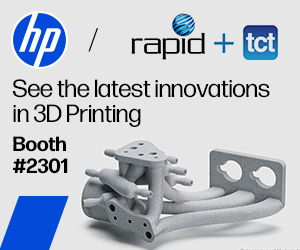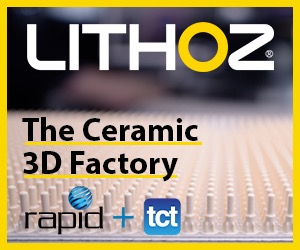EIT’s 3D Printed Cellular Titanium Spinal Implants Receive FDA Clearance
 3D printing has brought advancements to the medical industry across the board, but one area that has been especially affected is the treatment of spinal conditions. 3D printing has allowed for the fabrication of spinal implants that are precisely designed to fit each individual patient’s anatomy, which often means successful surgical outcomes where previously there would be a significant chance of pain or complications. It has also opened up possibilities for whole new classes of materials, ones that mimic the structure and texture of bone itself.
3D printing has brought advancements to the medical industry across the board, but one area that has been especially affected is the treatment of spinal conditions. 3D printing has allowed for the fabrication of spinal implants that are precisely designed to fit each individual patient’s anatomy, which often means successful surgical outcomes where previously there would be a significant chance of pain or complications. It has also opened up possibilities for whole new classes of materials, ones that mimic the structure and texture of bone itself.
Emerging Implant Technologies‘ (EIT) Cellular Titanium is an example of one of those extraordinary materials. The porous titanium was specially designed to integrate with the body as much as possible, and its structure engineered to facilitate bone growth. Its structure mimics that of trabecular bone, also known as cancellous or spongy bone, which makes up the inner layer of bones. According to EIT, Cellular Titanium features 80% porosity and a diamond pore size of ~ 650 μm, making it similar enough to the structure of cancellous bone that bone grafting is not necessary; the body’s existing bone naturally incorporates the implants.
3D printed from biocompatible titanium alloy TiAl6V4, Cellular Titanium’s combination of solid and cellular implant architecture actually encourages the growth of natural trabecular and cortical (the outside of the bone) bone. The material is hydrophilic, designed for maximum blood contact and leading to accelerated protein and mesenchymal cell attachment and bone cell differentiation. The implants have been used in procedures including:
- Anterior Lumbar Interbody Fusion (ALIF)
- Transforaminal Lumbar Interbody Fusion (TLIF)
- Posterior Lumbar Interbody Fusion (PLIF)
- Cervical operations
 Cellular Titanium implants have been used in more than 10,000 cases in over 15 countries, including Germany, France, South Korea, Australia and the Netherlands. Now, the FDA has granted 510(k) approval to the technology, meaning that EIT, which is based in Germany, can begin the full commercialization process in the United States, joining a small but growing group of approved 3D printed medical implants.
Cellular Titanium implants have been used in more than 10,000 cases in over 15 countries, including Germany, France, South Korea, Australia and the Netherlands. Now, the FDA has granted 510(k) approval to the technology, meaning that EIT, which is based in Germany, can begin the full commercialization process in the United States, joining a small but growing group of approved 3D printed medical implants.
“This is a major milestone for EIT,” said Guntmar Eisen, Co-Founder and CEO of EIT. “We look forward to bringing our unique technologies to the United States and partnering with top tier surgeons and institutions to bring the best results to patients that are in need of these devices.”
EIT has only been around since 2014, but its technology has already made an impact across the world. It’s focused solely on implants for spinal alignment, and Cellular Titanium was designed to overcome a number of shortcomings that make conventional implant designs and materials problematic, such as non-fusion, biocompatibility issues, subsidence, migration and imaging distortion. The implants are 3D printed using Selective Laser Melting (SLM) technology and finished with proprietary post-processing methods.
Case studies and retrieval analysis have shown extensive bone intergrowth throughout the implants in both the cervical and lumbar spine within a short period of time. In addition, the design of the implants allows them to be imaged clearly on X-ray and MRi machines, unlike solid metal. All around, Cellular Titanium is an example of how 3D printing can create devices that are so finely tuned to the body that they become part of the body itself, rather than foreign objects.
You can learn more about Cellular Titanium below:
Discuss in the Cellular Titanium forum at 3DPB.com.
[Images: EIT]
Subscribe to Our Email Newsletter
Stay up-to-date on all the latest news from the 3D printing industry and receive information and offers from third party vendors.
Print Services
You May Also Like
Low-cost “Suzy” Polymer Powder 3D Printer is Faster and Cheaper than Past Models
Polish laser powder bed fusion (LPBF) firm Sinterit has released a follow-up to its predecessors, Lisa and Nils, called Suzy, a $19,490 printer equipped with a 30W fiber diode laser....
India’s $58M Space Fund Is a Boon for AM Innovation
India’s space industry is picking up serious momentum. With a projected $44 billion space economy by 2033, the country is aggressively expanding its capabilities, fostering private-sector participation, and reducing its...
Japanese Advanced Manufacturing Capabilities Grow in Europe with Sodick’s Purchase of Prima Additive
The global economy is currently undergoing a reshuffling in terms of what gets manufactured where. In large part, this trend is being driven by new geopolitical alliances and the need...
Bosch Invests €6M into Serial Auto Part 3D Printing
German industrial conglomerate Robert Bosch GmbH, the world’s largest supplier of automotive parts, has announced a new investment into Nuremberg, Germany additive manufacturing (AM) facility. The nearly €6 million in...





























